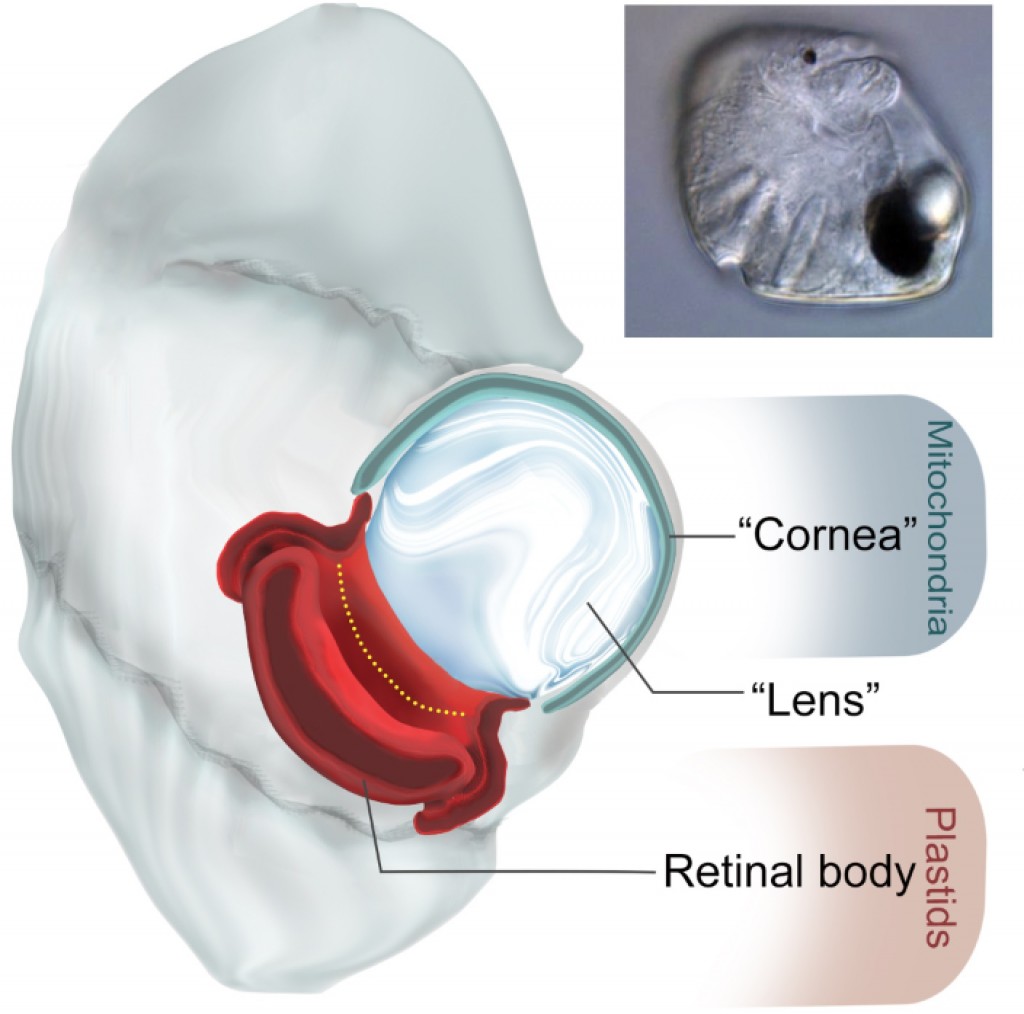
A diagram of the eye found in the single-celled warnowiid. When the researchers first examined the organism they believed the dark purple spot seen in the warnowiid (inset image) was part of an organism it had eaten. (Image credit: Greg Gavelis)
Researchers have found many of the components required for a complex eye in a single-celled organism, providing insight into the evolutionary origins of the eye. The findings show how a complex system can evolve in a simple organism.
The research team examined warnowiids, a single-celled organism, and found that they have ocelloids, an eye-like structure with parts functioning similar to the cornea, lens, iris, and retina of complex camera eyes. Using electron microscopy researchers found that a layer of interconnected mitochondria, the organelle responsible for providing energy to the rest of the cell, surrounding a lens, creating a cornea.
The researchers also found plastids, the organelle responsible for harvesting energy from light in plants, suggesting that the light-harvesting organelle adapted to detect light for sensory functions.
Original research paper published in Evolution on July 1, 2015.
Names and affiliations of selected authors

